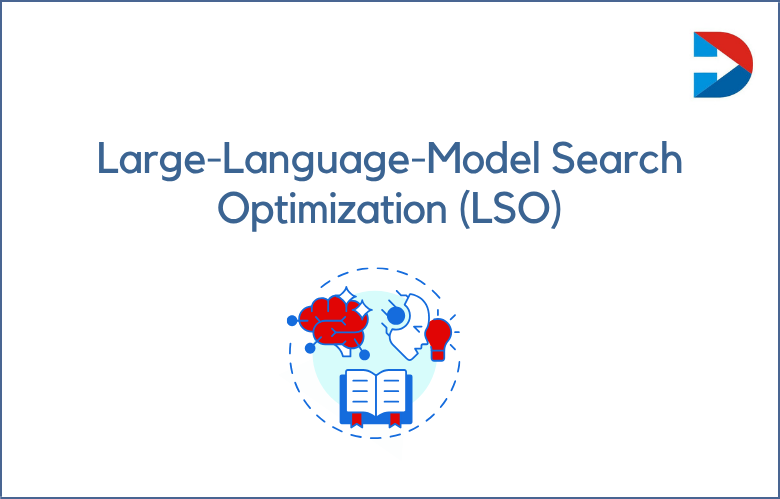Pharmaceutical marketing channels are a crucial aspect of the industry that ensures the vast range of products reaches and benefits the end consumers.
Since healthcare products, including pharmaceuticals, are essential to our health system, it is vital to understand how they are marketed through distribution channels.
We will examine the various pharmaceutical marketing channels and their role in the industry.
What are Pharmaceutical Marketing Channels?
Drug companies use Pharmaceutical marketing channels to inform, persuade, and sell their products to healthcare professionals and patients.
These channels include advertising, sales representatives, direct-to-consumer marketing, conferences, publications, and more. Pharmaceutical marketing channels aim to create awareness of a new drug, educate healthcare providers on its benefits and risks, generate demand, and persuade patients to take it.
Marketing channels are an essential component of the drug development process as they help improve the uptake and success of a new product.
How do Pharmaceutical Marketing Channels Work?
The process of pharmaceutical marketing channels begins with clinical trials. Once regulatory bodies like the FDA have approved the drug, drug companies develop marketing strategies and tactics to promote their products to healthcare professionals.
One common channel used in pharmaceutical marketing is the sales representative. These representatives are responsible for promoting the drug to healthcare professionals and answering questions.
Sales reps often offer free samples and other incentives to encourage healthcare providers to prescribe the drug to their patients.
Another form of pharmaceutical marketing is direct-to-consumer advertising. This type of advertising is targeted toward patients rather than healthcare professionals.
Drug companies use TV, print, and online media to advertise their products directly to patients. These advertisements contain information about the drug’s benefits, risks, and side effects.
Direct-to-consumer advertising aims to educate patients about their health conditions and generate demand for the drug.
Understanding Pharmaceutical Marketing Channels: How Medicines Reach Your Hands
Do you ever wonder how the pharmaceutical industry brings medicines from the laboratory to those needing them?
Getting a new drug approved and available in the market is lengthy and complex, involving various stages, stakeholders, and channels.
One crucial aspect of this process is pharmaceutical marketing channels, which are the channels through which drug companies promote and distribute their products to healthcare professionals and patients.
I will take a closer look at pharmaceutical marketing channels and how they work. By the end of this article, you will better understand why medicines end up in your hands and the role of marketing channels in this process.
The Art of Pharmaceutical Marketing Channels
Pharmaceutical companies use a variety of channels to market their products. However, choosing the right marketing channel is critical in reaching your target audience and achieving your objectives.
Pharmaceutical marketing channels have evolved from traditional marketing methods like print and broadcast media to social media and content marketing.
This blog will discuss the importance of pharmaceutical marketing channels and how to choose the right one for your business.
Exploring the Different Pharmaceutical Marketing Channels
The field of pharmaceuticals has grown exponentially over the past few years. With more and more research taking place, the industry has expanded to offer an array of different treatments.
The industry’s growth was only possible by adopting advanced marketing techniques. We will explore the different marketing channels used in the pharmaceutical industry.
Types of Pharmaceutical Marketing Channels
Direct-to-Consumer (DTC) Advertising:
This channel primarily targets patients, encouraging them to consult their doctors and request a particular medication. This marketing channel has effectively increased the sales of specific drugs or treatments.
However, it has also attracted criticism for increasing the cost of drugs and encouraging unnecessary prescriptions. Experts estimate that DTC spending on advertising and promotions will hit $10 billion in 2020.
Direct-To-Physician Marketing (DTP):
This marketing channel involves pharmaceutical companies using sales teams to approach physicians and sell their drugs.
This channel has received its fair share of criticism as it has been linked to increased prescription drug prices. However, it is seen as the most effective pharmaceutical marketing channel companies use and can be very profitable.
Wholesalers and Distributors:
Pharmaceutical companies use wholesalers and distributors to ensure drugs are delivered safely and efficiently to hospitals, clinics, and retail pharmacy chains.
These organizations are responsible for fulfilling orders, stocking products, and providing delivery services. By doing so, wholesalers and distributors take on the risk of ensuring the stock gets to retailers, which can be beneficial for pharmaceutical companies looking to minimize expenses.
Mail Order Pharmacies:
This channel provides a convenient way for patients to purchase medical prescriptions through a digital platform.
It has recently grown in popularity due to the COVID-19 pandemic since it provides an alternative to the traditional brick-and-mortar pharmacy that involves physical contact.
Patients can either have prescriptions mailed to their location or pick them up through curbside services.
Traditional Marketing Channels:
Traditional marketing channels such as TV, radio, and print ads have been the mainstay of pharmaceutical companies for decades. However, these marketing channels come with their limitations.
For instance, TV ads are expensive, and reach and frequency are difficult to control. On the other hand, print ads offer a limited reach and are not easily measurable.
Despite these limitations, traditional marketing channels can effectively reach a broad audience and increase brand awareness. Choosing the proper channels that align with your target audience’s demographics and preferred media consumption habits is essential.
Digital Marketing Channels:
Digital marketing channels such as social media, email marketing, and websites allow pharmaceutical companies to engage with their target audience more personally.
Social media platforms like Facebook, Twitter, and LinkedIn offer a cost-effective way to reach a specific audience with highly targeted ads. Pharmaceutical companies can use social media to share educational content and engage in conversations with their target audience.
Email marketing is another effective digital marketing channel that can be used to nurture leads and maintain relationships with physicians and patients.
Conclusion
Pharmaceutical marketing channels have undergone significant changes over the last decade due to technological advancements and consumer behavior, driving companies to adopt innovative product delivery methods.
There is no one-size-fits-all paradigm regarding pharmaceutical marketing channels. Companies must decide what channel type will work best for their products, goals, and strategies.
A balance is required to ensure that high-quality healthcare products are made available to the target consumers and priced relatively considering market forces.
In conclusion, the pharmaceutical marketing channel remains integral to the healthcare ecosystem, benefiting the medical and pharmaceutical industry and patients.
What are Pharmaceutical Marketing Channels?: FAQs
What Are Pharmaceutical Marketing Channels?
Pharmaceutical marketing channels are the communication pathways used by pharmaceutical companies to promote drugs, therapies, or medical devices to healthcare professionals, patients, and other stakeholders.
Why Are Marketing Channels Important in the Pharmaceutical Industry?
They help educate doctors and patients, build trust, drive prescriptions, support compliance, and differentiate products in a regulated and competitive market.
What Are the Main Types of Pharmaceutical Marketing Channels?
The primary channels include direct to physician (DTP), direct to consumer (DTC), digital marketing, sales representatives, medical conferences, print media, and online platforms.
What Is Direct to Physician (DTP) Marketing?
DTP marketing involves promoting products directly to doctors through sales reps, samples, detailing sessions, and continuing medical education.
What Is Direct to Consumer (DTC) Marketing in Pharma?
DTC marketing communicates drug benefits directly to patients through TV ads, websites, social media, and patient awareness campaigns.
How Is Digital Marketing Used in Pharma?
Pharma companies use digital tactics such as email marketing, SEO, webinars, online journals, mobile apps, paid ads, patient portals, and influencer outreach.
What Role Do Medical Conferences Play in Pharma Marketing?
Conferences allow companies to showcase products, share research, distribute literature, and build relationships with healthcare professionals.
How Are Key Opinion Leaders (KOLs) Used in Pharma Marketing?
KOLs are influential doctors or researchers who provide expert endorsements, share clinical experience, and build credibility for new drugs.
Is Content Marketing Effective in the Pharmaceutical Sector?
Yes. Content such as explainer videos, FAQs, whitepapers, case studies, and research articles helps engage doctors and informed patients.
What Regulations Impact Pharmaceutical Marketing Channels?
Regulations from authorities like the FDA, EMA, HIPAA, and national healthcare agencies govern what can be promoted, how claims are presented, and how content is distributed.
What Is Multichannel Marketing in Pharma?
It is the coordinated use of online and offline channels such as web, email, mobile, print, and in-person interactions to deliver consistent and compliant messaging.
How Is Social Media Used in Pharmaceutical Marketing?
Pharma brands use LinkedIn, Twitter, YouTube, and Facebook to educate, raise awareness, and provide patient support while adhering to strict regulations.
What Are Pharmaceutical CRM Tools Used For?
CRM platforms help manage healthcare professional interactions, schedule follow-ups, track communications, and gather insights to improve engagement.
What Is the Role of Patient Advocacy Groups in Pharma Marketing?
These groups collaborate with pharma companies to share drug information, raise awareness, and educate patients on treatment options.
What Is eDetailing in Pharmaceutical Marketing?
eDetailing uses digital tools such as webinars, interactive slides, and video presentations to promote products to doctors, often as a substitute for in-person visits.
How Does Pharmaceutical Email Marketing Work?
Email campaigns deliver clinical updates, treatment guidelines, research summaries, and invitations to healthcare professionals and subscribers.
Can Pharmaceutical Companies Use Influencer Marketing?
Yes, under strict compliance. Patient influencers, caregivers, or health bloggers may share personal experiences with drugs or treatments.
What Is the Role of Print Media in Pharma Marketing Today?
Print is still relevant for medical journals, brochures, prescription inserts, and professional magazines, especially for older healthcare professionals.
What KPIs Are Used to Measure Pharma Marketing Success?
Key performance indicators include prescription lift, healthcare professional reach, engagement rates, lead quality, ROI, and patient adherence improvements.
What Are the Emerging Trends in Pharmaceutical Marketing Channels?
Emerging trends include AI driven targeting, telemedicine partnerships, voice search optimization, real world evidence marketing, and the use of AR and VR for product demonstrations.




